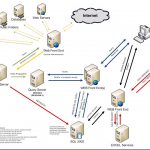Am in the land of setting up quite a few 2013 environments to demo and test. Some using VMware, HyperV, Cloudshare to name a few. Ran into a ‘gotcha’ starring SQL which I thought I would share. In this scenario I’m setting up a Dev / POC environment which is a single server SharePoint 2013 environment and not set as a Domain Controller. SQL is also deployed to that box. Using the UI it’s not possible to create a new farm due to the fact I’m using a local account as farm admin, therefore, had to use the wonderful New-SPConfigurationDatabase Powershell command to create the SharePoint config database).
Here we go with Powershell…
PS C:\Users\SA-SP2010-SQL> New-SpConfigurationDatabase
cmdlet New-SPConfigurationDatabase at command pipeline position 1
Supply values for the following parameters:
DatabaseName: SharePoint_Config
DatabaseServer: MYSHAREPOINTSERVER
FarmCredentials
Passphrase: **************
Then, BANG– got the following error:
“New-SPConfigurationDatabase : SQL server at MYSHAREPOINTSERVER has an unsupported version 10.50.1600.1. Please refer to
“http://go.microsoft.com/fwlink/?LinkId=230806″ for information on the minimum required SQL Server versions and how to download them.”
Ahh, wrong SQL version?! Darn… Ok, so checked my version and noticed it was not running Service Pack 1 on SQL – silly me – should have RE-READ the hardware and software requirements!
So, went to check this at in the Links to Available Software section listed on this link: http://technet.microsoft.com/library/cc262485(office.15)?ocid=fwlink#section5
Downloaded SQLServer2008R2SP1-KB2528583-x64-ENU.exe from here:
http://www.microsoft.com/en-us/download/details.aspx?id=26727
Then deployed that, restarted the server then ran New-SPConfigurationDatabase – success!
Moral of this tale is as always, check and double check the software requirements on the link here and make sure you have deployed the lot – that link again is: http://technet.microsoft.com/library/cc262485
Hope my solution helps you out if you run into the same problem…










